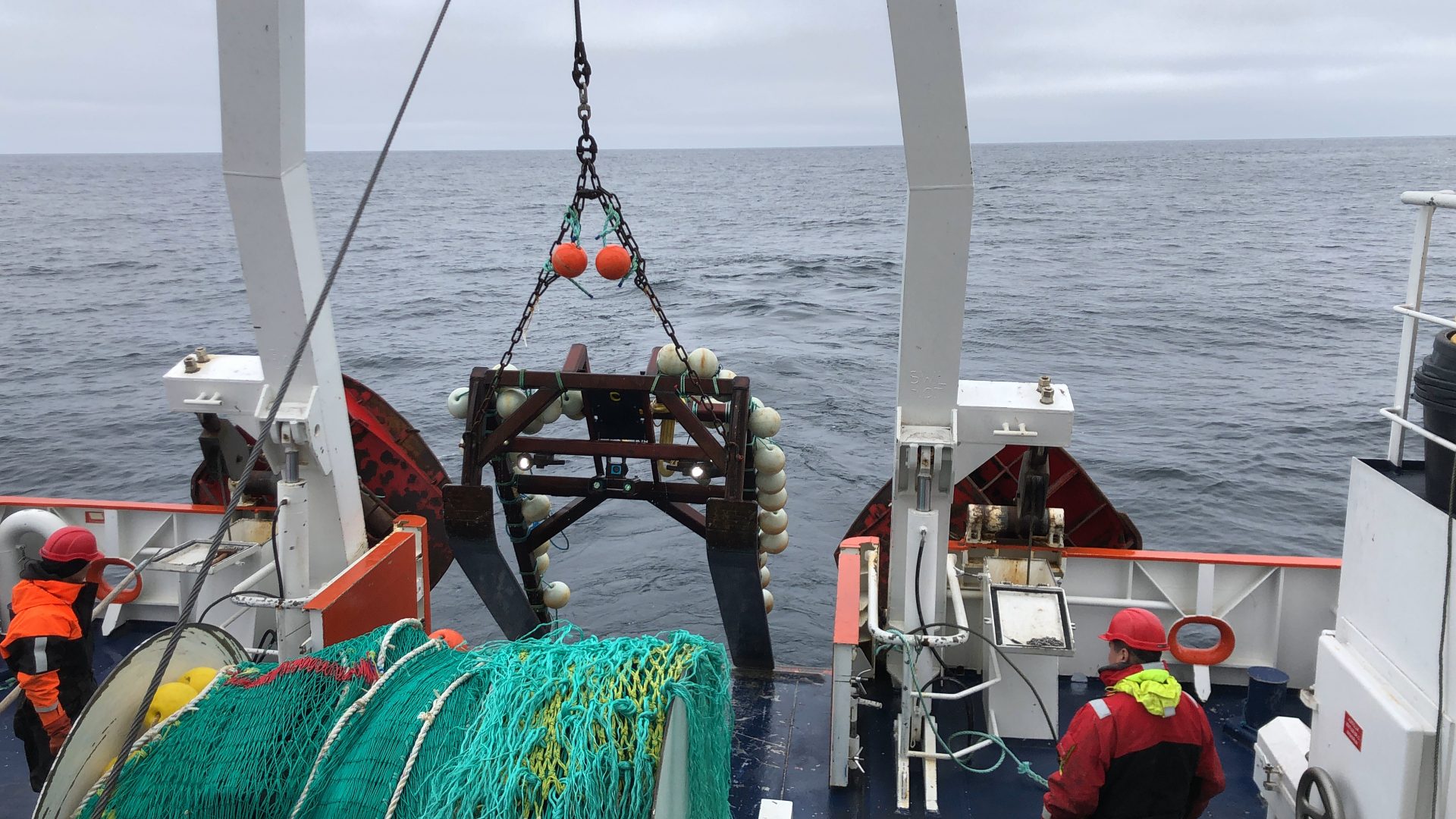Soft coral garden identified Published 29.06.2020

Researchers from the Greenland Institute of Natural Resources, Zoological Society of London and University College of London have identified a soft coral garden habitat in the Davis Strait, West Greenland, featuring a high abundance of soft cauliflower corals and more than 150 associated species. The discovery has just been published in the scientific journal, Frontiers in Marine Science.
The coral garden is located of Toqqusaq Banke, west of Nuuk, spanning at least 60 km of continental slope. The high densities of soft corals, sea anemones, sponges, gorgonian corals, feather stars and bryozoans found at depth between 300 and 600 meters, create a deep-sea wilderness with positive influence on other species. Several of the identified invertebrate species are characterized by high fragility, slow growth, and late reproduction.
The soft coral garden is immediately adjacent to the prawn, greenland halibut and cod fisheries.

A Vulnerable Marine Ecosystem
The coral garden and observed densities of seabed organisms are considered in relation to the UN-FAO’s definition of vulnerable marine ecosystems (VMEs), OSPAR Habitats and the wider literature. The study proposes a 486 km² area of continental slope as a VME. The United Nations General Assembly (UNGA) Resolution 61/105 called upon States to take action to protect VMEs. This has direct implications for the management, exploitation and conservation of Greenland’s deep-sea resources and ecosystems. This sensitive and ecologically important habitat would likely be seriously or irreversibly harmed by physical disturbance.

Most of the seabed unexplored
Since 2017, researchers from GINR, ZSL and UCL have been deploying a towed video sled during stock assessment surveys. A detailed analysis was conducted of imagery from 18 stations along the Toqqusaq Banke. Over 1,200 still images were sampled from the videos, each representing approximately 8m² of seafloor. Each image was individually reviewed, identifying the organisms present, resulting in over 44,000 annotations from a combined image area of 10,000m2. This may seem like a lot but compared to Greenland’s 2.2 million km2 exclusive economic zone (EEZ), only a tiny fraction of the seafloor has been documented in detail.
Pristine seafloor, like this soft coral garden, create habitats for other species, and can also provide nursery areas for fish. Documentation of such biologically and ecologically significant areas is important to improve our understanding of the marine ecosystem, and for the management of our living resources.
For more information, contact:
Senior researcher in the Greenland Climate Research Centre, Martin Blicher on Tel. +299361200 or Email: mabl@natur.gl
You can watch the video here:

